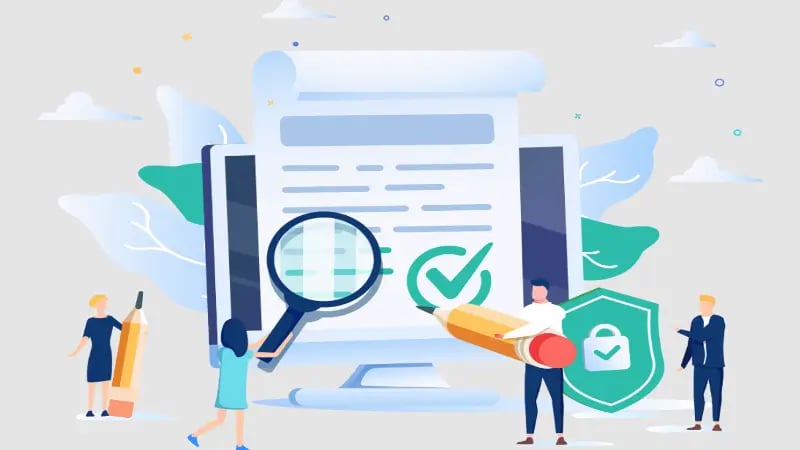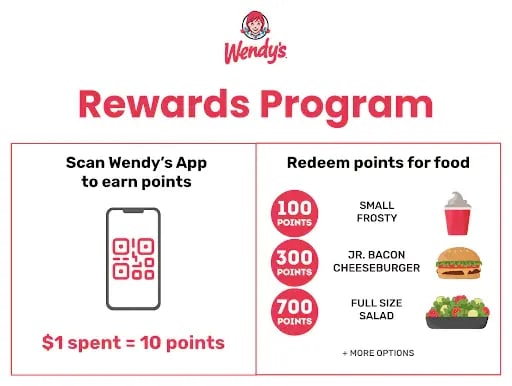5 Ways To Leverage POS Analytics for Targeted Marketing Campaigns
Data and analytics are invaluable tools for businesses that want to revolutionize how they communicate and engage with their target audience in the competitive marketing landscape.
Analytics from your chosen point-of-sale (POS) system are collected in real-time when a customer makes a purchase. These can provide a comprehensive view of your business's sales, customers, inventory, and more.
This makes it even easier to create targeted marketing campaigns using the customer data and analytics it automatically gathers after each transaction. With this in mind, let's jump into some key ways to leverage POS data in your marketing strategy for a campaign that excels in all the right places.
Can You Use POS Data To Personalize Your Next Marketing Campaign?
If you're regularly using a point-of-sale system in your brick-and-mortar store, unknowingly, you are collecting vast amounts of valuable customer data.
As consumers make purchases and interact with your business, your POS system stores data in real-time on orders, payments, product information, and customer details that can all be leveraged to influence your targeting efforts.
For example, suppose your POS system records a customer buying the same beauty product repeatedly. In that case, you can use this information to create a customized discount campaign that offers customers discount codes for targeted products.
Taking a data-driven approach to your marketing efforts is the key to driving more conversions and better results.
Using a POS system to automate and streamline the collection of these insights gives your team more time to analyze the results and create marketing strategies that speak directly to loyal customers.
What Types Of Data Can You Leverage From A POS System?
If you have a modern, electronic POS system in your brick-and-mortar store, there are plenty of ways to use your checkout software to leverage insights. Here are a few ways to gain insights from your POS to create better, more effective marketing campaigns.
Firstly, you need to understand what kind of analytics your POS system will provide you with, including:
-
Sales transactions. Details of each transaction, including the items purchased, quantity, prices, discounts applied, and total amount paid.
-
Product information. Information about the products sold includes product names, SKUs (Stock Keeping Units), descriptions, categories, and prices.
-
Customer information. Customer data includes names, contact information, loyalty programs, or membership details.
-
Payment details. Information about the payment methods used, such as cash, credit card, debit card, mobile payment, or gift cards.
-
Timestamps. Time and date stamps indicate when each transaction occurred, providing insights into sales patterns and peak hours.
-
Inventory levels. Real-time inventory levels are based on products you have sold across all sales channels.
-
Sales channels. Data of the sales channel where the transaction occurred, such as in-store, online, or via your mobile app.
Next, this article will explore nine ways you can leverage the POS analytics mentioned above to create target marketing campaigns that resonate with consumers:
1. Understand Customer Preferences
One of the most valuable assets a POS system offers is customer data. Using a modern point-of-sale system, you can gain insights into your customer's favorite items on the menu or the size of clothing they buy from your retail store.
By analyzing your customer data, you can highlight any purchase trends that could be used to influence your next targeted marketing campaign.
Take Starbucks, for example. Their POS system regularly tracks customer drink orders, allowing marketing teams to create discount codes and offers based on individual preferences.
This increases conversions tenfold, as customers are twice as likely to engage with an offer code on their favorite drink order as a pose to something they have never tried before.
2. Segment Customers
Data and analytics are becoming increasingly vital for businesses to understand their customers better.
You can analyze POS data to create customer segments based on demographics, purchasing behaviors, visit frequency, favored marketing channels, product preferences, and spending patterns.
This will enable you to plan and create targeted marketing campaigns for specific customer segments and increase engagement with those customers. This will result in more targeted and effective communication, enhancing your relationship with those customers.
3. Monitor Campaign Performance
Analytics from your POS system, such as the sales of the item you promoted or coupon code usage, can help you accurately assess the effectiveness of your marketing strategies.
For example, a restaurant could run two campaigns. One could offer diners a buy-one-get-one dessert coupon, while the other could be a discount code for 20% off your bill. You can then analyze POS data to see what customers want and what to promote in your next marketing campaign.
This approach enables businesses to make more informed decisions about managing marketing resources and allocating funds where they will see maximum returns.
4. Optimize Marketing Spend
POS data can help you identify which marketing channels, messages, or creative elements are performing well and which are underperforming. You can then optimize marketing spend by reallocating resources to channels or campaigns that yield the highest return on investment (ROI).
In addition, if you run more than one store or restaurant, you can sync your data from each location into one system. Then, you can use the data to identify locations with the highest performance to determine where your marketing spend should be allocated.
5. Upsell Products
Inventory analytics show you which products aren't selling well and which are, allowing you to upsell these products through tailored marketing campaigns.
Popular items will likely drive strong results in promotions, so consider updating your website or menu to highlight best-sellers or train your employees to promote popular items.
In addition, you can also upsell products that need to be performing better to ensure you don't have wasted stock. For example, if a product isn't selling as much as you hoped, tell your email subscribers it is now discounted or promote it more on your social media pages.
6. Send Automated Emails
You can use your POS data to create customer profiles and collect contact information. Then, you can use automated email marketing tools to reach out to customers based on their purchasing habits.
For example, you can email customers personalized details such as their name, city, or offers related to past orders. Customers are more likely to engage with an email customized to their preferences and based on their previous experience with the store.
In fact, experts at MailModo suggest that 72% of customers are more likely to engage with personalized email messaging.
In addition, why not use automated email marketing to retarget customers who haven't made a purchase in a while? POS systems can send reminders, discount codes, and more to customers who have yet to make a purchase within a specific time frame.
7. Introduce Targeted Rewards
If you want to take your targeting efforts to the next level, implementing a loyalty program to your marketing strategy is a game changer.
Better still, a POS system makes the loyalty program process even easier. By tracking and storing customer spending habits, POS systems make it easy to set up a targeted rewards system based on each individual customer's purchase history.
A POS system not only tracks this data but creates customer profiles that produce valuable insights for loyalty-based targeting. Here, you can reward customers with points every time they make a purchase in-store. With an integrated POS system, you can also track customer spending on your ecommerce site.
As the points build up, customers can win a set of tiered rewards such as an in-store discount, a free product, or exclusive access to an upcoming sale.
Take a look at this example from the fast-food chain Wendy's:
Here, you can see that each $1 spent results in ten points towards a reward purchase.
8. Locate Your Most Profitable Stores
If your business operates over multiple locations, an integrated POS system can help you identify your most profitable locations for targeted campaigns. This combined set of data allows you to highlight which stores are driving the most conversions and which locations are falling behind.
Using these insights, you can decide which stores should receive more of your marketing spend, time, and effort. For example, your most profitable store is likely to be the best option for a large campaign release, as it will likely drive more customers and provide greater visibility for your product release.
Your least profitable store is a great option for more marketing investment. Attract customers to a lesser-known location with store-specific offers and events, as well as more coverage on your socials.
9. Use Your POS System To Survey Customers
Last but not least, don't forget that your POS system can be used as much more than a checkout tool.
Did you know that, as well as processing transactions, your POS system can be used to generate non-purchase-specific insights about your audience? You can use your POS system to share surveys with converting customers after they make a purchase to gain more insight into their experience with your brand.
Your POS technology can automatically send check-out surveys and follow-up emails. By analyzing customer satisfaction data more deeply, you can create campaigns that aim to please future buyers and answer the complaints of your past customers.
Ready To Leverage POS Analytics?
Whether you're using a POS system at your retail store or restaurant, data and analytics can help inform your marketing decisions.
So, take advantage of the analytics provided by your chosen POS system and adapt your marketing campaigns accordingly to increase customer loyalty and sales.
Your POS system is a valuable asset to leverage in a competitive marketing landscape. The more insights you have into your target consumer profile, the better your next campaign will be.
This content is also available in:
- German: 5 Wege zur Analyse von Verkaufsstellen in Marketingkampagnen
- Spanish: 5 maneras de usar el análisis POS para campañas de marketing dirigidas
- French: 5 façons d'analyser les points de vente en campagnes marketing
- Italian: 5 modi per sfruttare le analisi dei POS per campagne di marketing
- Romanian: 5 căi de a folosi analiza POS pentru campanii de marketing specifice
- Chinese: 利用销售点分析开展定向营销活动的 5 种方法

Opinions expressed in this article are those of the guest author. Aspiration Marketing neither confirms nor disputes any of the conclusions presented.












Leave a Comment